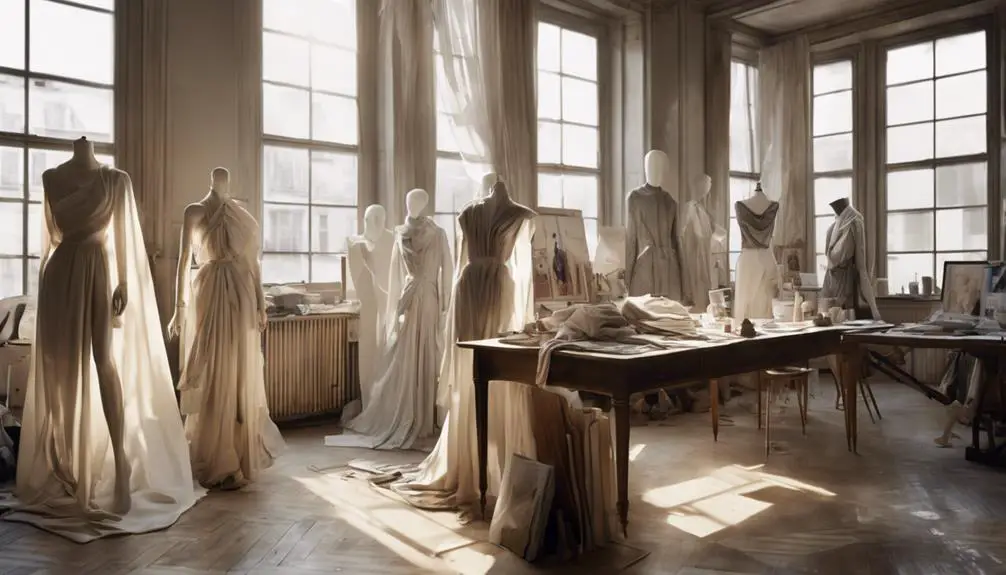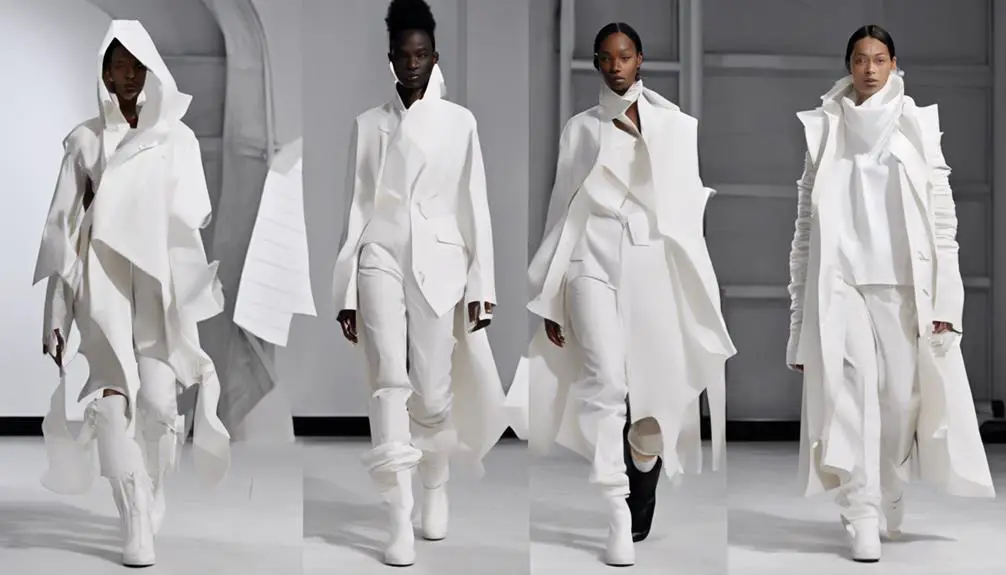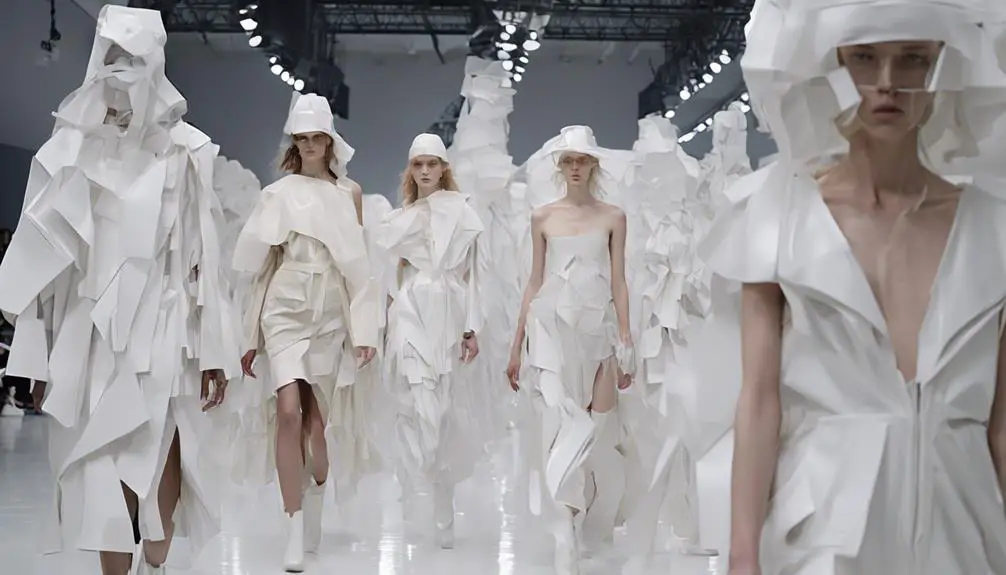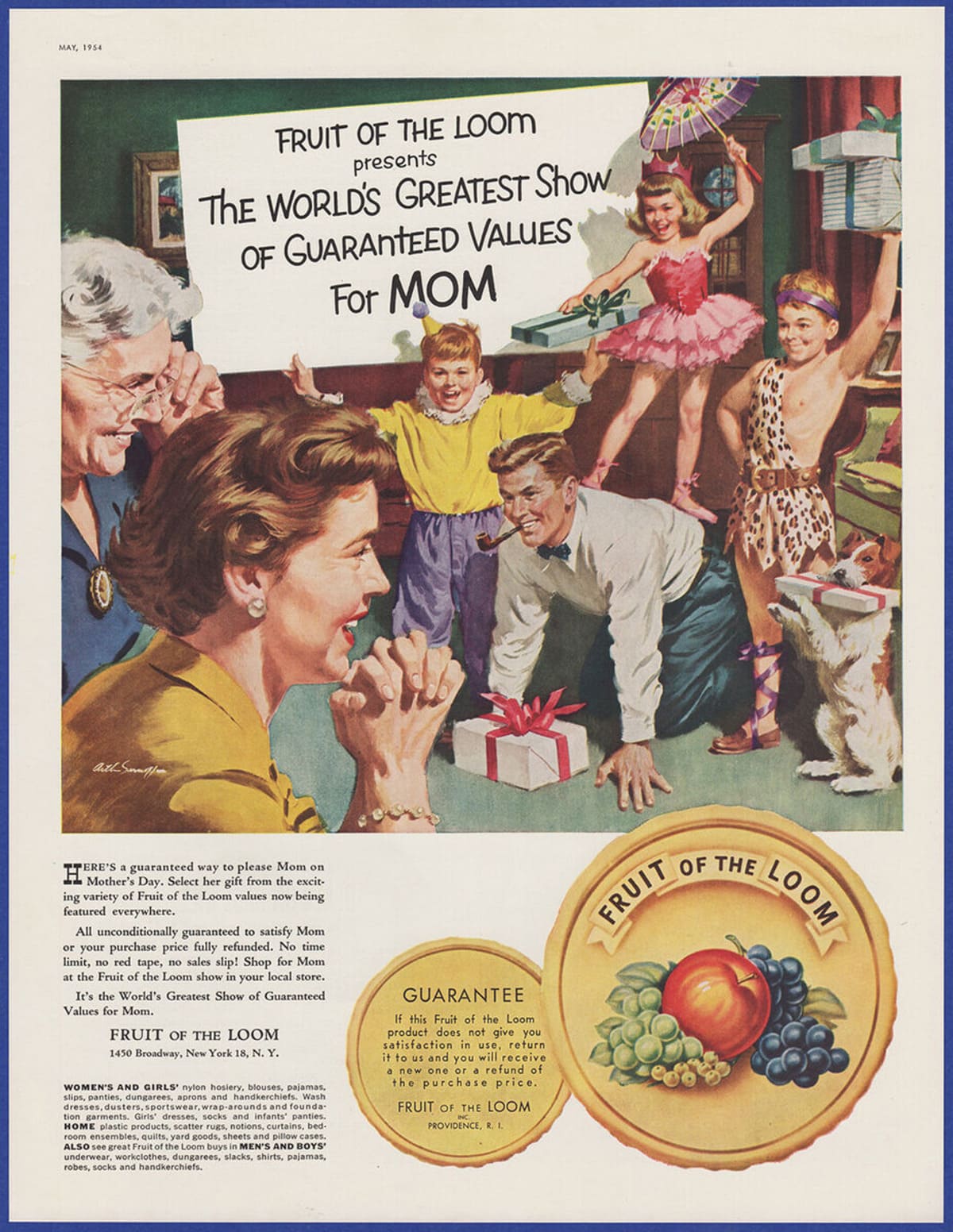Did you know that Maison Margiela's Spring 1995 show marked a pivotal shift in how fashion interacts with its audience, with roughly 70% of attendees feeling more engaged than at traditional runway events? This kind of innovation didn't stop there; the brand has consistently blurred the lines between art and fashion through its unique presentations. From half-finished garments to unexpected settings, Margiela's moments have often left the industry questioning the very essence of style. What might these daring choices tell us about the future of fashion?
Martin Margiela's Early Years

What shaped Martin Margiela into the influential designer he is today? Born in Belgium in 1967, you'd find Margiela studying fashion at the prestigious Royal Academy of Antwerp, where he graduated in 1979. His journey took a significant turn when he interned for Jean Paul Gaultier from 1984 to 1986, becoming Gaultier's best assistant. This experience honed his skills and laid the foundation for his future endeavors.
In 1988, you'd see him co-founding Maison Martin Margiela with Jenny Meirens, a venture that began in a modest Paris apartment. The brand made waves during its first show in spring 1989 at Paris Fashion Week, revealing its first womenswear collection. This debut marked a pivotal moment, showcasing innovative elements that would become synonymous with the label.
Margiela's early collections captured attention not just for their cutting-edge designs but also for their unique presentation. Models donned masks, emphasizing anonymity and allowing the garments to take center stage. This approach challenged traditional fashion norms, inviting audiences to focus on the clothes rather than the individuals wearing them.
From avant-garde silhouettes to reimagined leather goods, Margiela's vision was clear: fashion could be both artistic and wearable. His fearless experimentation set the tone for what Maison Margiela would become—a beacon of innovation in the fashion world, forever changing the landscape of design.
Iconic Fashion Shows
Martin Margiela's innovative spirit didn't just shape his early collections; it redefined how fashion shows could be experienced. In the Spring 1995 show, he challenged the conventional runway format by placing models among the audience, creating an intimate atmosphere that drew viewers in. This transformative approach set the stage for what luxury fashion could feel like, breaking down barriers between the collection and its admirers.
The Spring 1996 presentation further showcased Margiela's avant-garde approach, featuring models with shoes taped to their feet, a striking example of unconventional styling that left a lasting impression. Then came the Fall 1997 show, where garments appeared half-finished, reinforcing Margiela's deconstructionist ethos that celebrated unfinished beauty in fashion. This idea of embracing imperfections resonated deeply with audiences and critics alike.
In Spring 1998, Margiela took things a step further with flat displays and video presentations, emphasizing geometric shapes and innovative designs. This bold move pushed the boundaries of traditional fashion showcases, enchanting attendees with a fresh perspective. Fast forward to Spring 2001 at the Louvre, where Margiela transformed everyday items into high fashion, exemplifying his ability to merge art with commerce in a remarkable way.
Through these iconic fashion shows, Margiela and his anonymous design team not only showcased collections but also opened up new dialogues about the nature of fashion itself, leaving an indelible mark on the industry.
Signature Design Elements

Stepping into the world of Maison Margiela means encountering a bold fusion of unconventional materials and radical design philosophies. This fashion label, under the innovative direction of its creative director, has redefined the landscape of contemporary fashion through its unique signature design elements. One of the most recognizable features is the brand's signature ghost tags, marked by four white stitches, symbolizing a commitment to anonymity and emphasizing the garments over the designer's identity.
Margiela's designs often showcase deconstruction, a concept that reinterprets traditional garment construction. You'll find exposed seams and playful alterations that reveal the inner workings of clothing, inviting you to appreciate fashion from a new perspective. The use of unconventional materials is also a hallmark, with pieces that transform everyday items—like leather butcher's aprons—into stunning evening gowns. This radical approach challenges your understanding of materiality and craftsmanship.
Another iconic element is the Tabi boot, introduced in 1989 with its distinctive split-toe design, which has influenced luxury footwear trends for years. Additionally, oversized proportions play a significant role in Margiela's aesthetic, challenging conventional silhouettes and redefining notions of fit and shape. Each artisanal collection pushes boundaries, making a bold statement that encourages you to embrace individuality and creativity in fashion. Emphasizing these signature elements, Maison Margiela continues to inspire and captivate fashion enthusiasts around the globe.
Cultural Impact and Recognition
Maison Margiela's radical design philosophy and commitment to anonymity have greatly shaped the cultural landscape of fashion. By embracing deconstruction and innovative techniques, Martin Margiela earned the enigmatic title of "fashion's invisible man," drawing parallels to iconic figures like Greta Garbo. His avant-garde approach has not only redefined luxury but also challenged traditional notions of beauty and identity within the fashion world.
Retrospective exhibitions, such as the 2008 showcase at the Fashion Museum Province of Antwerp, highlighted Margiela's innovative contributions and the profound impact of his work. Documentaries like "The Artist is Absent" (2015) and "Martin Margiela: In His Own Words" (2019) have provided valuable insights into his unique design philosophy, solidifying his cultural significance. Media coverage in prestigious outlets like Vogue and The Guardian reflects his enduring relevance in contemporary fashion discussions, inspiring countless modern designers.
Moreover, Maison Margiela's emphasis on recycling and sustainability has positioned the brand as a pioneer in ethical fashion. By prioritizing these principles, they've influenced consumer perceptions of luxury and reshaped contemporary fashion trends. Margiela's work encourages a thoughtful approach to fashion, pushing for a future where style doesn't come at the expense of the environment.
Legacy and Future Influence

With a legacy rooted in deconstruction and avant-garde aesthetics, Maison Margiela has left an indelible mark on the fashion industry. You can see its influence everywhere, from high fashion runways to contemporary streetwear. The brand's commitment to sustainability and ethical practices, initiated by Margiela himself, has set a new standard that many luxury brands now aspire to achieve. This focus on upcycling not only honors the environment but also reshapes how we view fashion consumption.
Under John Galliano's creative direction, Maison Margiela has maintained its innovative spirit while evolving with the times. Galliano's fresh interpretations breathe new life into the brand's classic concepts, ensuring its relevance in today's market. His work emphasizes a blend of historical references with modern sensibilities, making each collection a statement of both nostalgia and progress.
Collaborations with influential figures, like Kanye West for the "Yeezus" album, showcase how Maison Margiela continues to impact popular culture beyond the runway. These partnerships speak volumes about the brand's ability to resonate with diverse audiences, proving that its avant-garde approach is not just a fleeting trend.
As you look forward, the future seems bright for Maison Margiela. Its growing global presence and robust revenue reflect its enduring influence and capacity to adapt. By staying true to its legacy while embracing contemporary practices, Maison Margiela is poised to inspire generations of designers and fashion enthusiasts alike.



